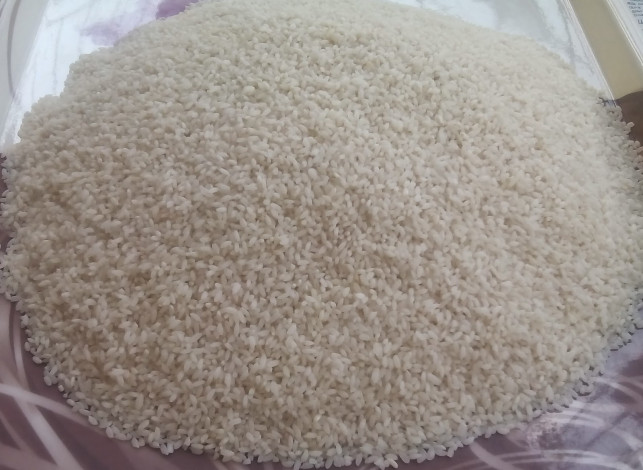
The problem of drying fragrant rice is less. It can also be
saved for a long time. The farmers themselves store these paddy and leave it
when the market increases.
The rich and middle class have polao, biryani, firni, payes at various festivals, and fragrant rice as the main ingredient. Not only middle class but also lower class people use fragrant rice for entertaining guests. The use of aromatic rice has also increased in hotels and restaurants. Overall, the demand for fragrant rice is on the rise. However, prices are rising in line with demand. Traders say that although the prices of all types of thick and thin rice fluctuate, the price of fragrant rice is always on the rise.
Dinajpur has a reputation as a paddy district. Boro or Aman, Dinajpur is one of the top districts in paddy production every season. Due to natural causes, the yield of Kataribhog paddy is higher here. Farmers are also inclined to cultivate aromatic paddy due to increasing demand and higher profits. Badshabhog, Kalijira, Chinigura (BRRI-34), Kataribhog, Zira Nazir, Paijam and Banglamati rice produced here are now valued worldwide. In the meantime, Kataribhog and Kalijira rice of Dinajpur have got Geographical Identification (GI) and are also representing the nature, culture and heritage of Bangladesh in the world.
According to the Dinajpur Department of Agricultural Extension, at once upon a time farmers used to cultivate Brri Dhan-34, Jira Katari, Challishajira, Badshabhog, Kalijira, Jata Katari and Kataribhog paddy in small plots of land along with other paddy. The cultivation of aromatic paddy has been increasing from the 2012-13 financial year. In that year 86,994 metric tons of aromatic rice was produced. Since then, the cultivation and production of aromatic paddy has continuously increased. In the last fiscal year 2020-21, 2 lakh 35 thousand metric tons of rice has been produced.
Asim Kumar Das, proprietor of AK Das Traders, has been trading rice for three men in Barabandar area of Dinajpur city. He said he still produces only fragrant rice in the traditional process of husking. Recently, he is selling rice online as well as retail. On an average, he sells more than 30 mounds of rice every day. According to the price list hung in the store, Badshabhog rice is being sold at Tk 120 per kg, Kalijira 110, Chinigura 100, Kataribhog 100, boiled Katari 95, boiled Jira Nazir 72, boiled Pajama 68, boiled Banglamati 72. He is selling 1 to 50 kg of rice packaged in jute sacks.
Asim Kumar further said that this fragrant rice is the food of fancy people. Even a couple of months ago, these rice were sold at a reduced price of Tk 5-10 per kg. A year ago, fragrant rice was sold at Tk 80 to 85 per kg. However, during the Corona period, sales were low due to lack of various events. Many mill owners had rice in the warehouse. The reason for the rise in prices, he said, was that paddy was not available. However, the hassle of drying these paddy is less. It can also be saved for a long time. As a result, the farmers themselves save these paddy in the hope of making more profit, and leave it when the market increases.
Raihan Ali(45), a farmer from Fasiladanga area of Sadar upazila, planted cumin nazir and chinigura rice on 8 bighas of land in the last aman season. Raihan said he has spent Tk 19,000 per bigha of land for harvesting and threshing paddy. He got 16 mounds of paddy. He sold paddy at Tk 1,700 per mound. According to calculations, his profit was Tk 8,200. Raihan said that at present the market for that paddy is Tk 2,200. After a few days, this paddy will be sold at Tk two and a half thousand per mound.
It is not known when and how the production of Kataribhog rice started in this district. However, there are various local folk tales surrounding this rice. The locals say that it is called 'Kataribhog' because of the custom of offering prasad or bhog to the deity with this rice. Raja Prannath of Dinajpur, on his way to the court of Mughal Emperor Aurangzeb, took Kataribhog rice along with various presents. The emperor was happy to get the rice and gave the title of king to Prannath. Since then, the people of this district still send Kataribhog rice as a gift to make their relatives happy. Concerned people said that this rice is now being exported abroad.
|Source: Online/SZK
Comment Now